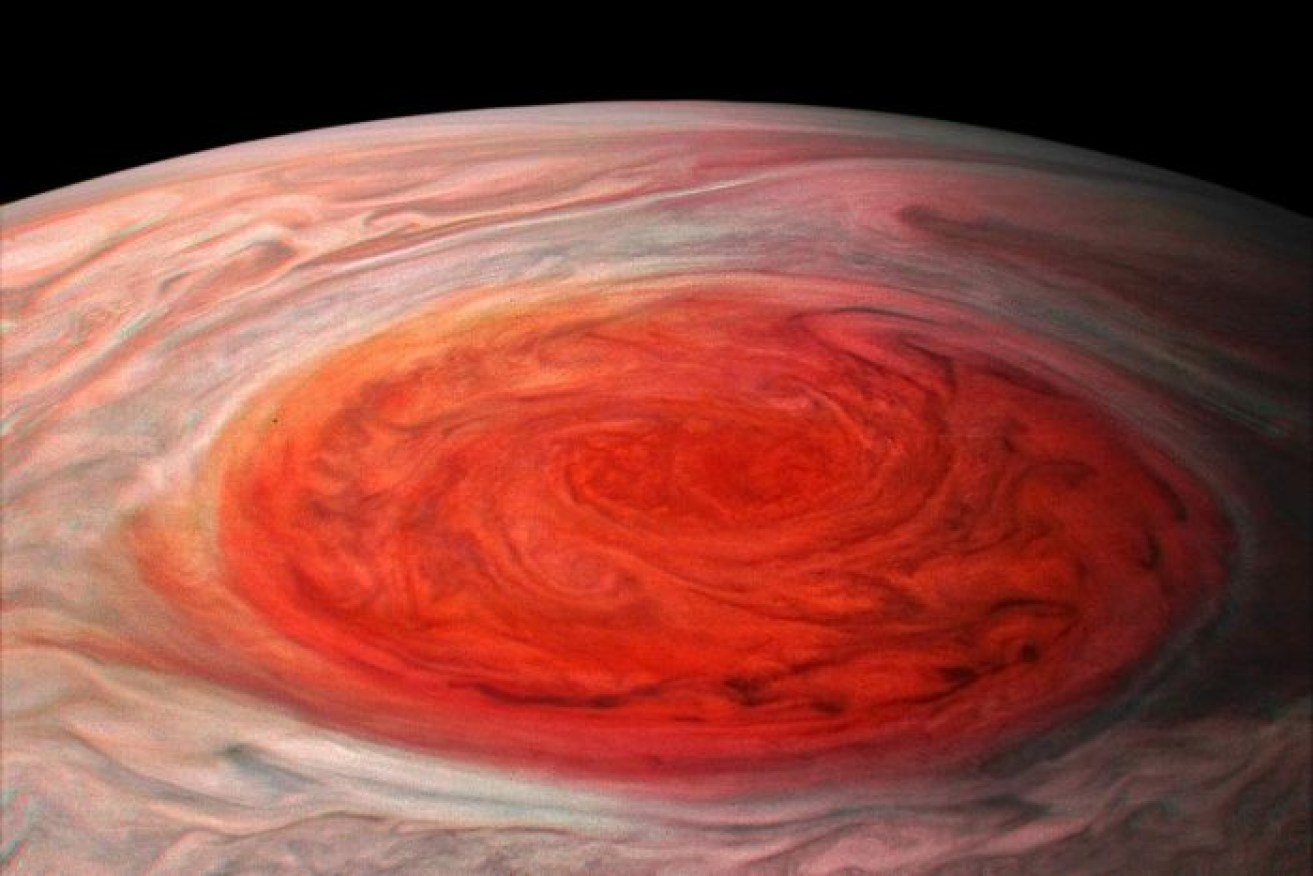First NASA images from closest fly-by of solar system’s biggest storm

A close-up image shows Jupiter's Great Red Spot as Juno approaches the planet. Photo: NASA/JPL-Caltech/SwRI/MSSS/Roman Tkachenko
The first ever close-up images of Jupiter’s gargantuan hurricane, the Great Red Spot, are beginning to trickle through from NASA’s Juno spacecraft after it completed its historic fly-by a few days ago.
Travelling at about 50 kilometres per second, Juno flew within 9000 kilometres of the billowing brick-red cloud tops of the hurricane, which has been raging for at least 200 years.
Scientists are hoping the images – which will continue to be downloaded into the weekend – will open a new chapter in our understanding of the solar system’s biggest storm.
The first raw pictures were released online, with NASA encouraging enthusiasts to process and enhance the colours and crop the images to highlight different aspects.
They show a roiling orange cauldron of clouds 16,000 kilometres wide over a turbulent world with huge polar cyclones and aurora.
The images will be downloaded chronologically as the probe approaches the planet, which means they will only get better and more detailed.
Juno’s most recent fly-by was the sixth time it had buzzed the giant planet since putting itself into a precise, lopsided orbit almost exactly a year ago.

The storm is 16,000 kilometres wide, and has mystified scientists for over 200 years. Photo: NASA/JPL-Caltech/MSSS/SwRI/Kevin M Gill
Scientists are hoping the Juno mission will provide insight into how the massive planet, and the solar system, evolved.
But Jupiter’s dense cloud cover — along with the most dangerous radiation belt in the solar system, which could fry Juno’s electronics — mean it is no easy feat.
Scientists have long sought to uncover the planet’s secrets, studying the Great Red Spot continuously since the early 1800s.
Even some of the earliest views of Jupiter through telescopes, in the late 1600s, reported a big spot on its surface. Many astronomers think this was probably the very same storm.
The Juno mission’s principal investigator, Scott Bolton from the Southwest Research Institute in Texas, said one of the questions they hoped to answer was what kept the hurricane spinning for so long.
“There are some scientists who believe that in order for a storm to have lasted that long, it must have very deep roots,” he said.
“Of course, up until now, we’ve only had the ability to look at the top part of Jupiter. We just see this thin veneer, which is gorgeous – it has these beautiful zones and belts, and this great storm on it, and a bunch of cyclones – but the key is what’s underneath.”
The team will also be looking for lightning, which has been seen elsewhere on Jupiter and suggests the presence of water clouds.
“Lots of storms on Earth have a lot of lightning, but it usually takes water,” Dr Bolton said.
“This storm may be more ammonia than water, but we don’t know.”
Juno’s visit comes at an opportune time. After all those centuries, the Great Red Spot appears to be vanishing before our eyes and telescopes.
“It’s been observed for hundreds of years, but now in the last couple of decades, we’ve noticed that it seems to be getting smaller and changing in shape,” Dr Bolton said.
“So we may be catching it at the right time. It’s always exciting when you can watch something in transition — you can learn a lot more.”








